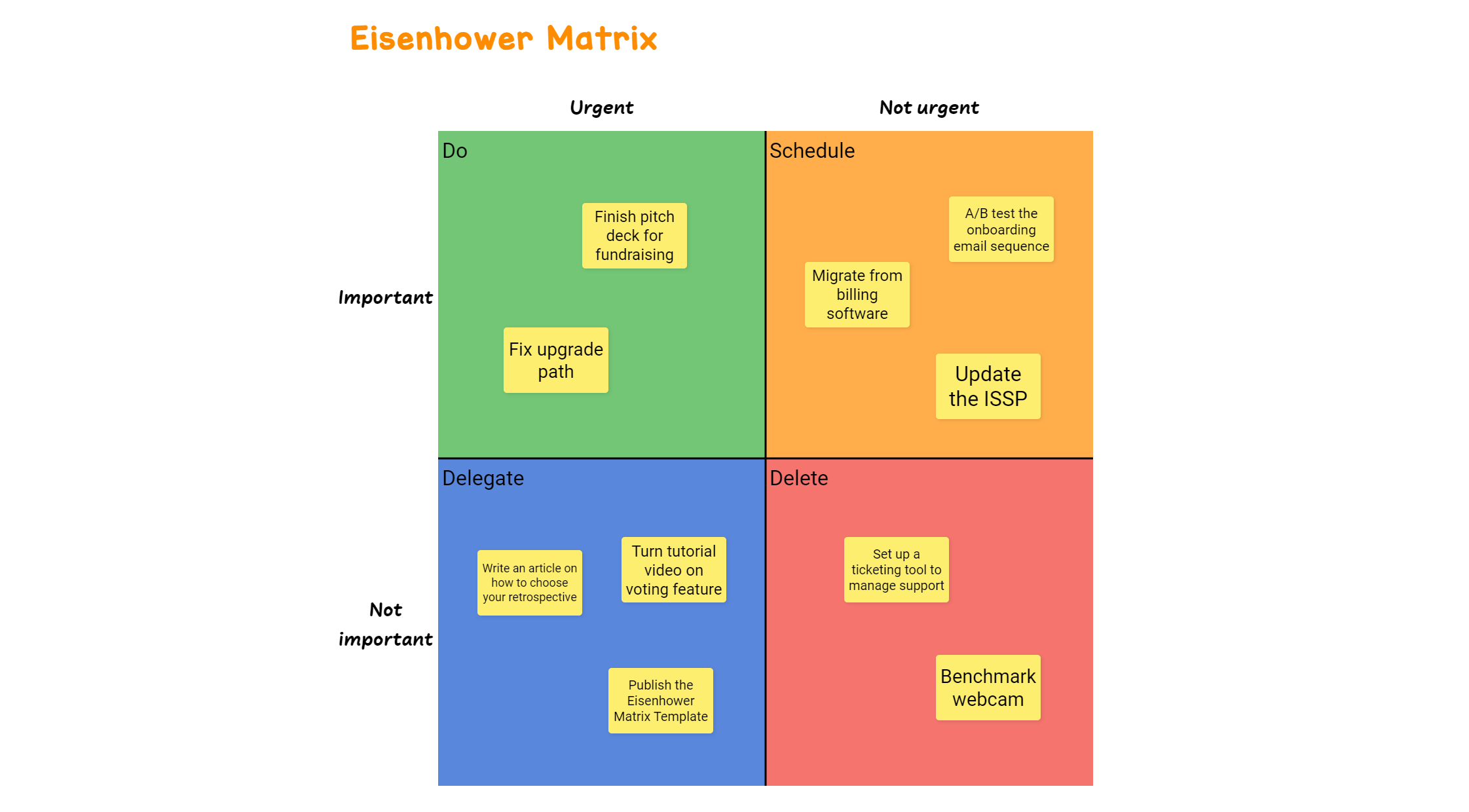Eisenhower Matrix

What is the Eisenhower Matrix?
Named after Dwight D. Eisenhower, 34th President of the United States, who is said to have used this method to manage his workload, the Eisenhower Matrix is a time management tool that helps prioritize tasks based on their importance and the degree of urgency of completing them.
Importance defines tasks necessary for the success of your short- or long-term projects, while urgency refers to tasks requiring your immediate attention. In this framework, importance takes priority over urgency.
The Eisenhower Matrix is generally used daily or weekly to organize better and sort out the tasks for which you are responsible. The objective is, in particular, to avoid being overwhelmed by an accumulation of urgent requests that are not so urgent or important when we think twice about them.
In the long term, one of the advantages of using this tool is identifying the source(s) of urgent and important requests and better preventing them, which allows for avoiding unnecessary emergencies. In addition to that, the Eisenhower Matrix can be used equally well in a personal or professional setting.
How to fill in the Eisenhower Matrix?
The Eisenhower Matrix is made up of four quadrants:
-
Quadrant 1: Important and urgent tasks -> To do
This quadrant groups tasks that need to be addressed immediately. These can be urgent problems to solve or critical tasks that block the progress of projects. Indeed, these tasks have a direct impact on your work or that of your collaborators.
In this first quadrant, the most important of all, limit the number of tasks to 5 or 7; the objective is to avoid overwhelming the workload for which you are responsible.
-
Quadrant 2: Important but non-urgent tasks -> To schedule
The second quadrant concerns tasks that are important for your long-term projects’ success but don’t have a clearly identified deadline. To ensure the progress and success of your project, you must remember to carry out these tasks, which is why it is recommended to plan their completion in your agenda right now.
-
Quadrant 3: Unimportant but urgent tasks -> To delegate
The third quadrant reunites tasks that require immediate action but are of little importance to the success of your long-term projects. These tasks do not need your involvement a priori; you can delegate them to relieve your workload.
-
Quadrant 4: Non-important and non-urgent tasks -> To delete
The fourth quadrant is for tasks that are neither important nor urgent but can still clutter your mind and be distracting. It would be best if you forgot about them to concentrate on the tasks that do have an impact on the success of your project in the long term.
Some suggested resources to learn more about the Eisenhower Matrix
- The dedicated website: Introducing the Eisenhower Matrix.
- A detailed article by James Clear, author of bestseller Atomic Habits: How to be More Productive and Eliminate Time Wasting Activities by Using the “Eisenhower Box.”